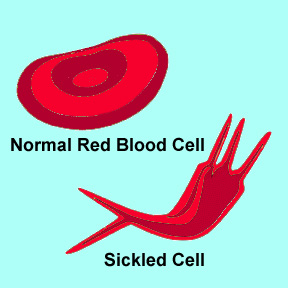With summer sports seasons in full swing and preparation for fall sports participation and training beginning, there's no better time to revisit the National Athletic Trainers' Association (NATA)'s Inter-Association Task Force Consensus Statement guidelines on sickle cell trait and the athlete.
"Since the release of the statement, new research reconfirms that the athlete with sickle cell trait faces a risk in sport, but also supports the importance of knowing sickle cell trait status and implementing education and specific precautions that allow these athletes safe play in sports," said Task Force Co-chair and University of Oklahoma Head Athletic Trainer Scott Anderson, ATC.

"Medical professionals, coaches, strength coaches, players and parents should be educated and aware of the settings that pose risk along with warning signs and symptoms from complications of exertion with sickle cell trait."
Inherited gene
Sickle cell trait is the inheritance of one gene for sickle hemoglobin and one for normal hemoglobin.
During intense or extensive exertion, the sickle hemoglobin can change the shape of red blood cells from round to quarter-moon, or "sickle." This change, exertional sickling, can pose a grave danger for some athletes by blocking blood vessels.
Symptoms
- fatigue
- difficulty breathing
- leg or lower back pain; and
- sudden weakness.
Risk factors
The risk that an athlete with sickle cell trait will suffer exertional sickling is increased by:
- Environmental heat
- dehydration; and/or
- uncontrolled asthma, acute illness and newness to altitude can also .
Prevention
Screening and simple precautions may prevent deaths and help the athlete with sickle cell trait thrive in his or her sport.- Efforts to document newborn screening results should be made during the pre-participation evaluation.
- In the absence of newborn screening results, institutions should carefully weigh the decision to screen based on the potential to provide key clinical information and targeted education that may save lives.
- Irrespective of screening, institutions should educate staff, coaches and athletes on the potentially lethal nature of this condition.
- Education and precautions work best when targeted at those athletes who need it most; therefore, institutions should carefully weigh this factor in deciding whether to screen. All told, the case for screening is strong.
Treatment
In the event of a sickling collapse, treat it as a medical emergency by doing the following:
- Check vital signs.
- Administer high-flow oxygen, if available, with a non-rebreather face mask.
- Cool the athlete, if necessary.
- If the athlete appears to have slowed mental responses, or as vital signs decline, call 911, attach an AED and transport the athlete to the hospital fast.
- Tell the physicians to expect explosive rhabdomyolysis and grave metabolic complications.
- Proactively prepare by having an Emergency Action Plan and appropriate emergency equipment for all practices and competitions.
Call for screening
Echoing the tenets of the NATA-spearheaded Inter-Association Task Force Consensus Statement:
- The College of American Pathologists recommends athletic programs consider confirming sickle cell trait status in all athletes' preparticipation physical examinations, and if an athlete lacks documentation, that screening be considered to determine his or her status.
- The Sickle Cell Association of Ontario, Canada, supports the potential of screening to protect the health of athletes with sickle cell trait and ensure that they have successful sports careers.
- Data from the U.S. National Sudden Death in Young Athletes Registry support pre-participation screening to prospectively identify athletes with sickle cell trait and to promote training modifications and precautions.
- Research affirms moderation in exercise providing a margin of safety for the working athlete with sickle cell trait.
Universal precaution versus screening
Anderson acknowledges controversial claims that the deaths are rare, the complications are due to exertional heat illness, and that "universal precaution" should be applied to sport instead of screening. "The evidence is otherwise as NCAA Division-I football players with sickle cell trait have a risk of death 37 times greater than those without the trait," he said. "Athletes with the trait who experience complications often lack clinical heat illness, and there is no model where "universal precautions" have been routinely successful.
According to Anderson, "Knowledge, education, precaution, and creating an environment that encourages and supports athletes with sickle cell trait are critical."
Source: National Athletic Trainer's Association
Posted May 9, 2012; updated July 24, 2015








